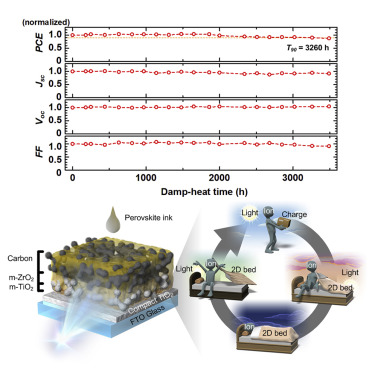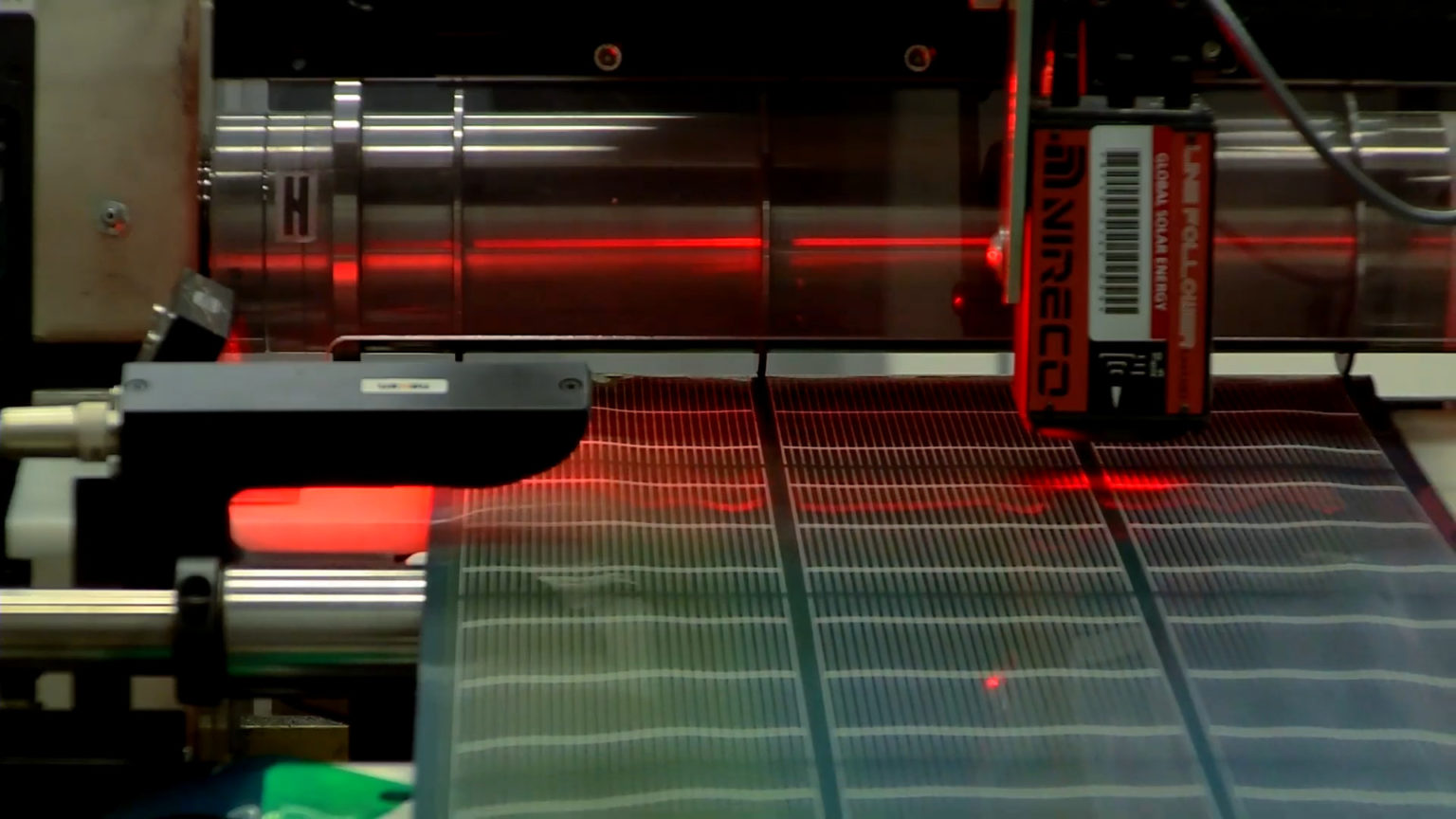

University of Hyogo: 20 years of outdoor durability: Perovskite
-Perovskite solar cells with carbon electrodes-
University of Hyogo
Kishu Giken Kogyo
The research group succeeded in “obtaining the world’s longest outdoor environment equivalent to 20 years of life.”
“This is a result that greatly supports the practical application of perovskite solar cells.”
This study:
By the Strategic International Collaborative Research Program (SICORP).
Solaronics, Switzerland,
With the Fraunhofer Institute in Germany,
Achievements from the joint research team.
Details of the study:
Published in “Cell Reports Physical Science” on November 13, 2021.
Next Generation Solar Panels:
“Perovskite solar cell performance equipped with carbon electrodes” is “utilizing the mechanism of recovery by light irradiation”.
What is a perovskite solar cell?
Perovskite solar cells are expected as next-generation solar panels.
Compared to silicon solar cells:
Compared to the current mainstream silicon-based solar cells,
High conversion efficiency potential and
Low manufacturing cost can be expected.
For silicon-based solar cells
With a thin film of 1/300,
Because it can generate electricity
It can be easily reduced in weight.
There are also expectations for the expansion of new applications for solar cells.
Research group development content:
Perovskite solar cell with carbon electrodes.
Titanium oxide with a porous structure,
Zirconium oxide,
Three layers of carbon electrodes were formed by printing.
Perovskite ink
Soak up to the bottom and heat-treat
Crystallize the perovskite layer and
It functions as a solar cell.
Improved conductivity value:
When the battery is exposed to sunlight,
The output parameter of the solar cell,
The open circuit voltage and the curve factor (characteristic value related to conductivity) are improved.
Suppressing deterioration of power generation output:
In the durability verification test, “the time it took for the power generation output to deteriorate to 90% of the initial value”
Recorded 3260 hours.
This corresponds to “20 years of durability (lifetime) in an outdoor environment”.
Durability comparable to silicon-based solar cells,
It was the first demonstration in a perovskite solar cell.
Perovskite solar cells with carbon electrodes:
No vacuum process is required, carbon electrodes are cheaper than metal electrodes,
It is easy to secure lightness by using a lightweight substrate in the complete coating process.
Graphite and iodine production:
With carbon electrode (graphite) and iodine production
Japan has a 20-30% share of the world market.
It is said that there is a merit that high competitiveness can be expected.
-Smart Japan
https://www.itmedia.co.jp/smartjapan/articles/2111/17/news068.html
Joint announcement: Performance of perovskite solar cells equipped with carbon electrodes is restored by light irradiation
-Demonstrating the durability of the world’s longest outdoor environment equivalent to 20 years-
https://www.jst.go.jp/pr/announce/20211113-2/index.html
Light-induced performance increase of carbon-based perovskite solar module for 20-year stability
Highlights
• Perovskite solar modules with a stability equivalent to 20 years are demonstrated
• Light-soaking treatment contributes to the efficiency and stability of the module
• The absolute increase in module efficiency is up to 1.4% during light soaking
• Light-soaking effect is associated with charge transport and ion migration
Summary
Improving stability has become one of the most important objectives in the practical application of perovskite photovoltaics.
Here, we develop encapsulated mesoporous-carbon perovskite solar mini-modules
that retain more than 92% of their initial performance after 3,000 h of damp-heat aging at 85°C/85% relative humidity,
while maintaining 90% of the initial value (T90) for 3,260 h,
equivalent to 20-year stability in outdoor use.
This stability is attributed to the light-induced performance increase phenomenon.
The mechanism is associated with the organic molecules 5-ammoniumvaleric acid and methylammonium
forming a quasi-2-dimensional perovskite/metal oxide interface with a positive effect on charge transport and ion migration.
This work extends our present understanding of the mechanism underlying the light-induced performance and stability increase.
– ScienceDirect
https://www.sciencedirect.com/science/article/pii/S2666386421003702
Mesoporous carbon for a 20-year stable perovskite solar cell – pv magazine International
https://www.pv-magazine.com/2021/11/15/mesoporous-carbon-for-a-20-year-stable-perovskite-solar-cell/